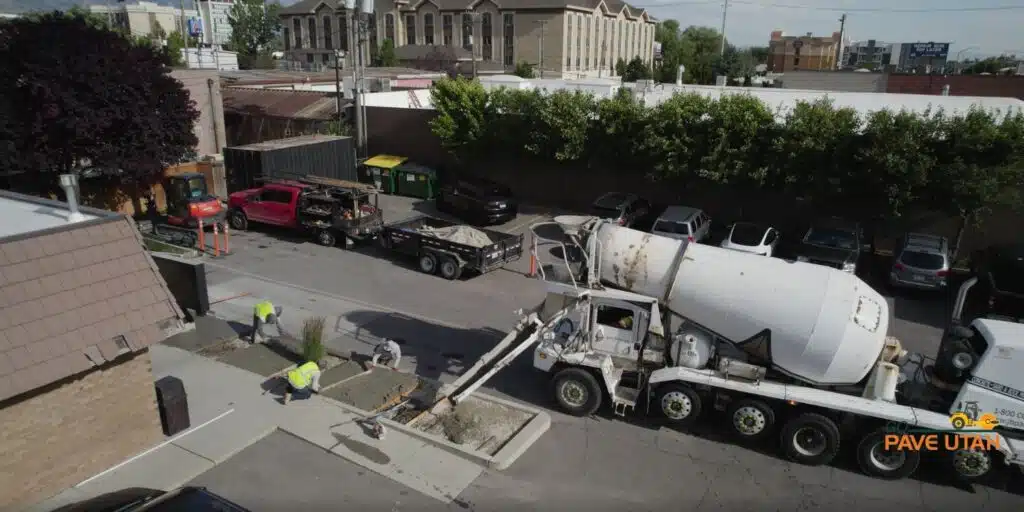
Concrete is a popular material for many pavements. It’s durable and doesn’t require a great deal of maintenance. Often, when we notice cracks or holes in concrete, we may think it needs to be replaced. Of course, asphalt can be repaired easily over and over again, but when issues arise with concrete, can it be salvageable or is the only option replacement? Let’s take a look.
Concrete failure typically occurs because of one of these three things (or a combination of all): changing temperatures, poor soil conditions, and/or water exposure. Typically, weather delivers the toughest impact on concrete. The expand and contract cycle that concrete goes through between the hot and cold weather can cause all sorts of issues. Additionally, poor soil compaction can create an unstable base for your concrete, which means the soil will settle and form voids under the slab. This causes parts of the slab to fall and sink, leaving holes or uneven portions. And, the water absorption and evaporation cycle is what causes spider cracking and other damages. Concrete pavements are susceptible to these factors, and over time, all concrete will start to show signs of wear and tear.
Concrete repair has become more common over the last seven to ten years, mostly due to technological improvements and better applications. Mudjacking, a method of mixing soil and concrete into a mud-like consistency then injecting it under the slab to lift it, has been used for many years. It’s a little messy, but it does work. Another repair method involves the use of polyurethane polymer to fill voids through small holes and lift the slab. It’s a quicker and more effective approach to mudjacking because it expands, hardens, cures in less than 30 minutes. It also compresses the surrounding soil, making a more stable base. Repairing concrete makes sense if the concrete has cracking due to freeze-thaw cycles or simply from age. It also is a good option for slabs that have settled and are uneven. Sunken footsteps, for example, are often remedied through repair and leveling, and it’s important to do so to prevent tripping hazards.
Replacing concrete is disruptive, expensive, and time consuming. However, there are many situations where this is the only safe and reliable option. You will likely need to replace concrete, rather than repair, when it’s older than 30 years. Deep cracking or many larger holes throughout the slab may also mean you need to replace the entire pavement. Sinking greater than eight inches typically calls for replacement as well. And, if your concrete was poured on a bad base, repairs will probably not do the trick and you’ll eventually need to start over.
Replacing concrete can be frustrating, but with an honest, expert crew, you will be satisfied knowing the result will be quality. Go Pave Utah can assess the issues with your concrete and will honestly inform you of the best options considering your time and budget. Contact us before your concrete gets any worse.
